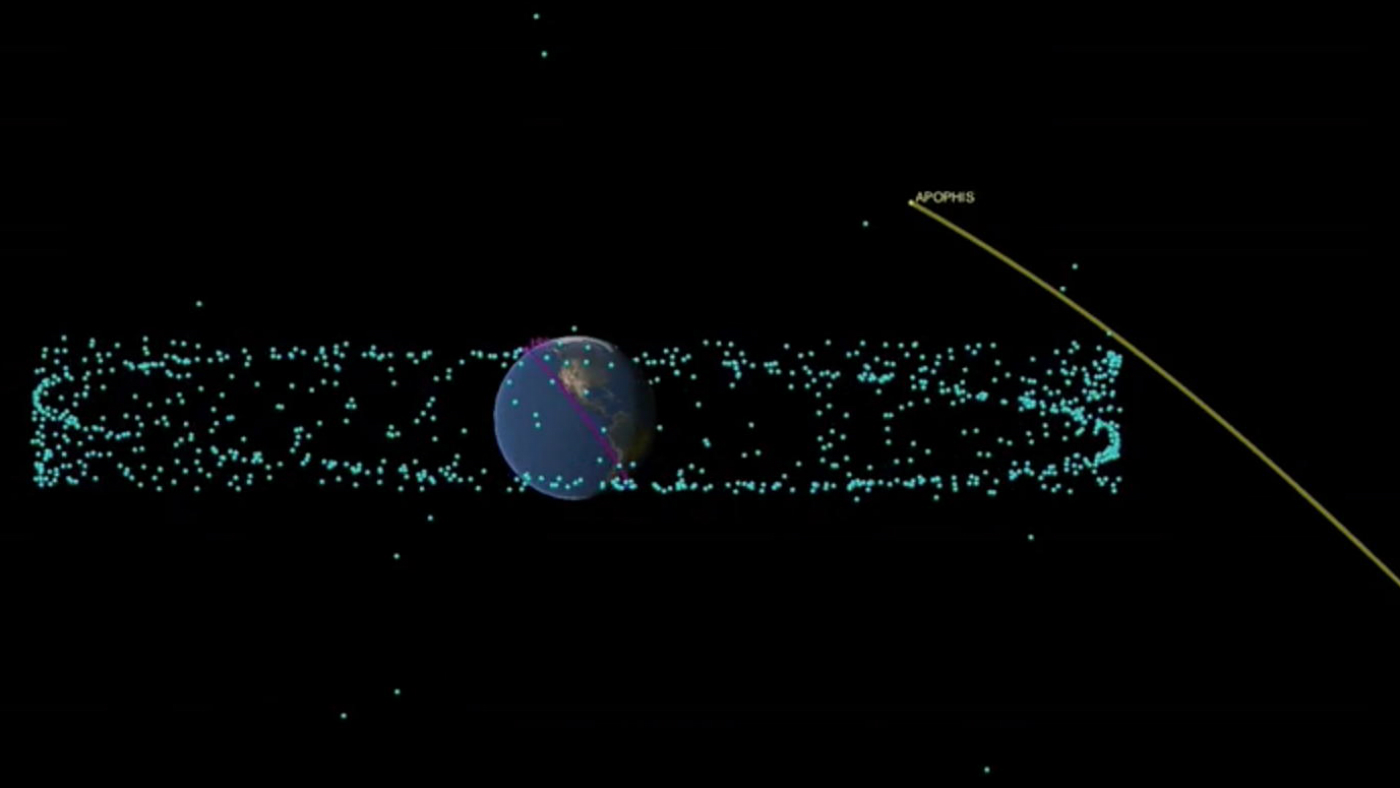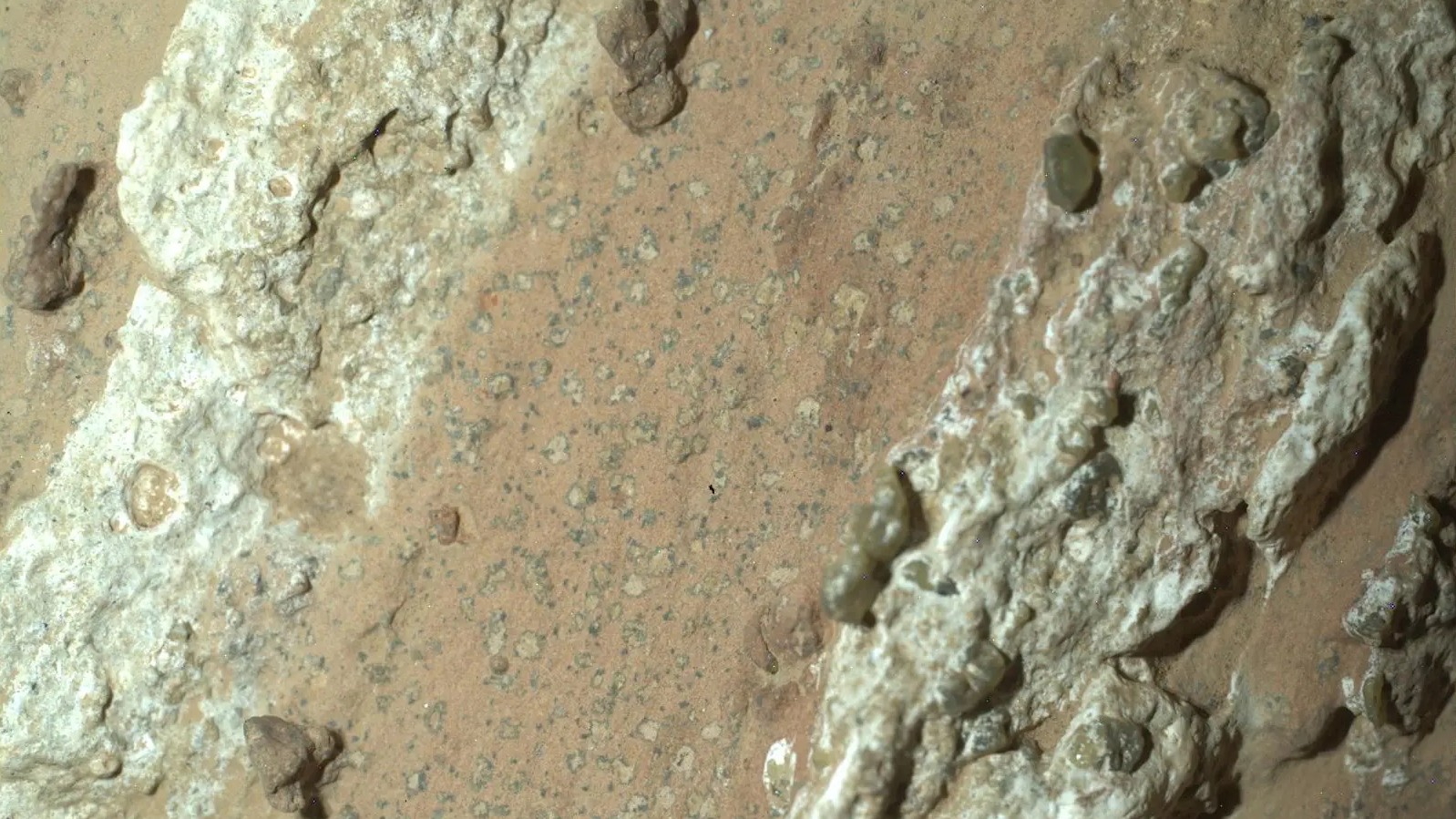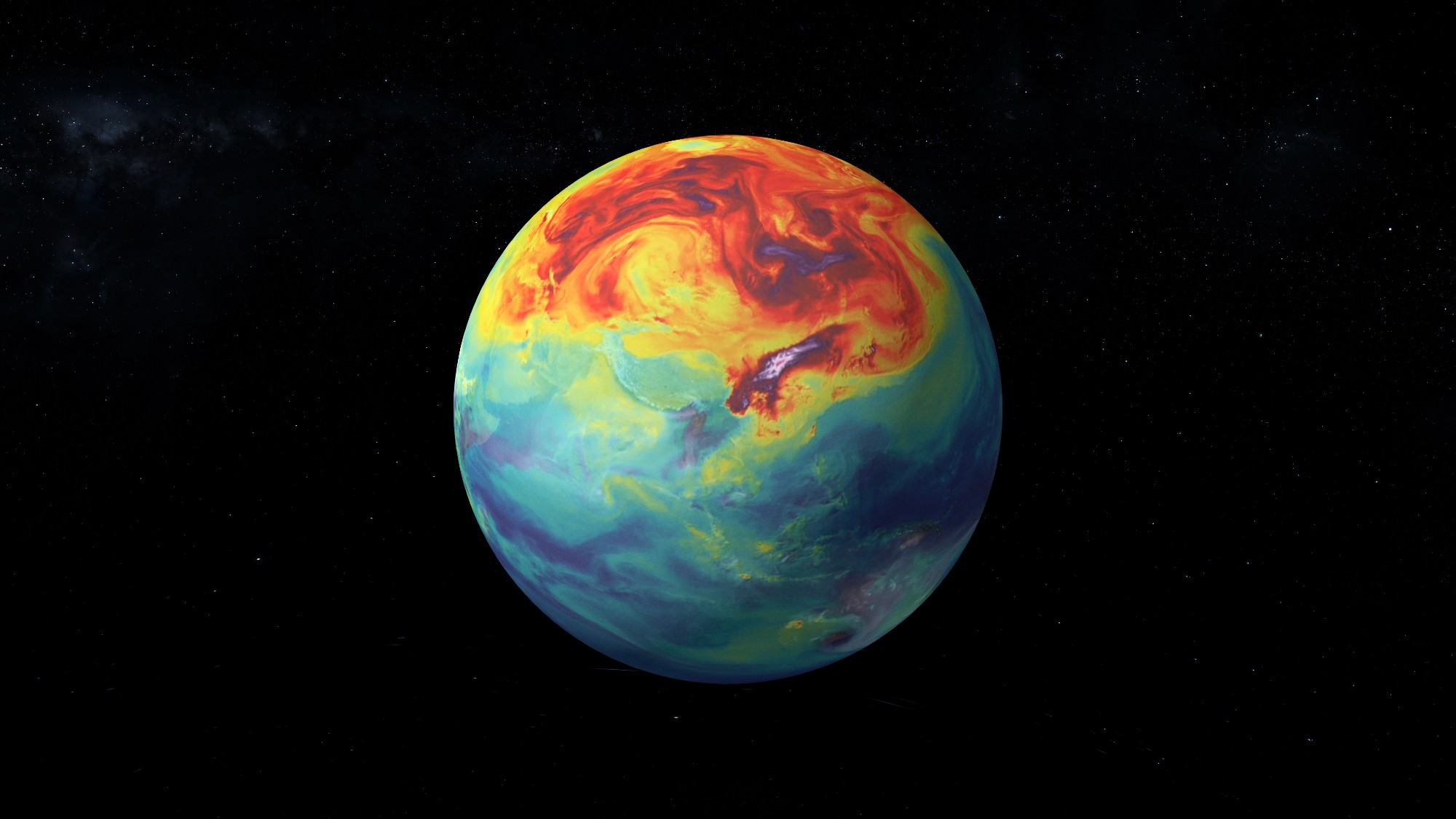What is the God of Chaos asteroid?
Nasa investigating impact scenarios for massive space rock set to pass ten times closer to Earth than our moon

Nasa has begun preparations for the arrival of a huge asteroid that is on course to pass unnervingly close to Earth a decade from now.
Scientists at the US space agency say the fly-by of 99942 “Apophis” - named for the ancient Egyptian god of chaos - is expected to take place on 13 April 2029.
According to the latest calculations, the asteroid will pass within 19,000 miles of our planet, briefly putting it closer to Earth than some man-made satellites, and ten times closer than our moon.
The Week
Escape your echo chamber. Get the facts behind the news, plus analysis from multiple perspectives.

Sign up for The Week's Free Newsletters
From our morning news briefing to a weekly Good News Newsletter, get the best of The Week delivered directly to your inbox.
From our morning news briefing to a weekly Good News Newsletter, get the best of The Week delivered directly to your inbox.
Stargazers will see the fly-by as a speck of light streaking across the sky, which will rapidly get brighter and faster as it approaches.
The Independent reports that it is “very rare for asteroids of this size to go past so close”.
Marina Brozovic, a radar scientist at Nasa’s Jet Propulsion Laboratory (JPL) in California, believes such a close approach “will be an incredible opportunity for science”.
“We’ll observe the asteroid with both optical and radar telescopes,” she said. “With radar observations, we might be able to see surface details that are only a few metres in size.”
A free daily email with the biggest news stories of the day – and the best features from TheWeek.com
Although the Nasa preparations were revealed just days after the head of the agency warned it is “time to take the threat of an Earth-destroying asteroid seriously”, researchers have ruled out the possibility of Apophis striking Earth, Sky News reports.
But if its course is changed significantly by Earth’s gravity during the 2029 fly-by, could Apophis spell ultimate doom for mankind?
What kind of asteroid is Apophis?
The near-Earth asteroid was discovered in June 2004 by scientists working at the Kitt Peak National Observatory in Arizona.
Apophis is currently travelling at tens of thousands of miles per hour and has an estimated diameter of around 370 metres - longer than the Eiffel Tower end-to-end.
The space rock is believed to be “bilobed”, meaning it consists of two large chunks of rock connected by a thinner “neck” section. Referred to as “contact binary”, asteroids of this type are usually comprised of two formerly separate smaller chunks of ice and rock that fused at their contact point.
What can we learn from the 2029 fly-by?
Apophis presents a rare research opportunity for scientists, as most asteroids that pass near our planet “aren’t more than 30ft wide”, reports science news site Gizmodo.
Davide Farnocchia, an astronomer at JPL’s Center for Near Earth Objects Studies (CNEOS), says it is important to study the space rock’s interior and how Earth’s gravity might impact it.
“We already know that the close encounter with Earth will change Apophis’ orbit, but our models also show the close approach could change the way this asteroid spins, and it is possible that there will be some surface changes, like small avalanches,” Farnocchia said.
Paul Chodas, director of CNEOS, added that Apophis is “representative of about 2,000 currently known potentially hazardous asteroids”, and that “by observing Apophis during its 2029 fly-by, we will gain important scientific knowledge that could one day be used for planetary defence”.
Are scientists sure it won’t hit us?
Space enthusiasts may recall that Apophis has form when it comes to spooking humans. In 2004, shortly after the asteroid was discovered, Nasa triggered a wave of doomsday prophesising by revealing that their calculations had found that Apophis had a 2.7% - or around one in 300 - chance of hitting Earth in 2029. Nasa later revised its estimations to definitively rule out the possibility of an impact then.
However, concerns remained about the extremely slim chance that Apophis would, in 2029, pass through a so-called “gravitational keyhole” as it flies by Earth. Experts said that if the asteroid flew through this very specific half-mile-wide gap of space, its orbit would be nudged out of place by our gravity - setting it on a direct collision course with Earth during its next approach, in 2036. This eventuality was officially ruled out in 2013.
CNEOS astronomer Farnocchia told Newsweek that the orbit of Apophis after the 2036 is harder to predict, but assured any nervous Earth-dwellers: “While we cannot yet completely rule out a collision of Apophis after 2060, those chances are extremely small, less than one in 100,000.”
What would happen if a large asteroid struck Earth?
Even with the best preparations, research suggests that the outlook would be bleak.
In 2013, a study attempted to evaluate the effects of a hypothetical 400-metre-wide asteroid impact on Earth. Although it would not destroy the planet or be an extinction event, Quartz says that the report’s findings are “not a pretty picture”.
The asteroid impact would carry the energy of about 3,300 megatons of TNT, which is “roughly equivalent to 60% of the world’s remaining nuclear weapons detonated at the same time, in the same place”, according to the news site.
“More than one hundred million cubic meters of rock would be instantly vaporised on impact,” Quartz adds. “The shaking produced would be equivalent of a 7.0 earthquake.”
However, the researchers’ report insists that Earth would not be “strongly disturbed by the impact”, which would not “make a noticeable change in the tilt of Earth’s axis” and would not “shift the Earth’s orbit noticeably”.
More recently, at the 2019 Planetary Defense Conference in Maryland this week, Nasa experts prepared a fictional scenario in which scientists “identify an asteroid that seems poised to crash into Earth in 2027”, Space.com reports.
The researchers talked through “how to determine what regions face what risks and how to respond - all in the hopes that if they ever face a similar situation in real life, they’ll be ready for it”, the site says.
According to Sky News, if an impact were inevitable, Nasa’s first step would be to “precisely measure the object’s speed and trajectory”, information that would allow the agency to decide whether to “attempt to prevent the collision by deflecting the asteroid, or evacuate the area it could crash into”.
Unfortunately, experts say that a Hollywood move-style attempt to destroy a large asteroid with nuclear weapons would create one of two problematic scenarios: the asteroid would simply shatter into smaller pieces that also pose a danger, or the smaller rocks would reform into a whole as a result of gravity.
Nasa administrator Jim Bridenstine told the conference that films had “offered a false sense of security in suggesting humanity could necessarily save itself” from an impending asteroid impact.
-
 Homes with great fireplaces
Homes with great fireplacesFeature Featuring a suspended fireplace in Washington and two-sided Parisian fireplace in Florida
-
 Is $140,000 the real poverty line?
Is $140,000 the real poverty line?Feature Financial hardship is wearing Americans down, and the break-even point for many families keeps rising
-
 Film reviews: ‘The Secret Agent’ and ‘Zootopia 2’
Film reviews: ‘The Secret Agent’ and ‘Zootopia 2’Feature A Brazilian man living in a brutal era seeks answers and survival and Judy and Nick fight again for animal justice
-
 Blue Origin launches Mars probes in NASA debut
Blue Origin launches Mars probes in NASA debutSpeed Read The New Glenn rocket is carrying small twin spacecraft toward Mars as part of NASA’s Escapade mission
-
 ‘The Big Crunch’: why science is divided over the future of the universe
‘The Big Crunch’: why science is divided over the future of the universeThe Explainer New study upends the prevailing theory about dark matter and says it is weakening
-
 The moon is rusting
The moon is rustingUnder the radar The Earth is likely to blame
-
 Panspermia: the theory that life was sent to Earth by aliens
Panspermia: the theory that life was sent to Earth by aliensUnder The Radar New findings have resurfaced an old, controversial idea
-
 Africa could become the next frontier for space programs
Africa could become the next frontier for space programsThe Explainer China and the US are both working on space applications for Africa
-
 NASA reveals ‘clearest sign of life’ on Mars yet
NASA reveals ‘clearest sign of life’ on Mars yetSpeed Read The evidence came in the form of a rock sample collected on the planet
-
 SpaceX breaks Starship losing streak in 10th test
SpaceX breaks Starship losing streak in 10th testspeed read The Starship rocket's test flight was largely successful, deploying eight dummy satellites during its hour in space
-
 NASA is moving away from tracking climate change
NASA is moving away from tracking climate changeThe Explainer Climate missions could be going dark